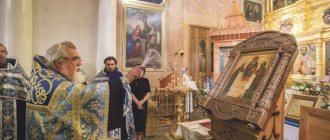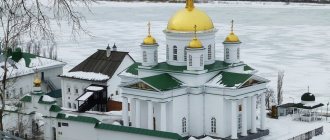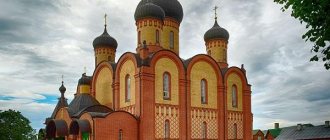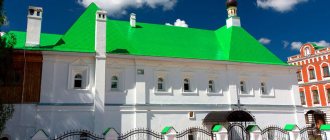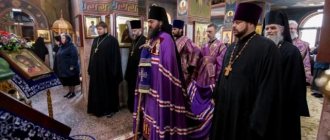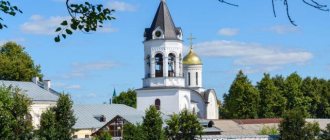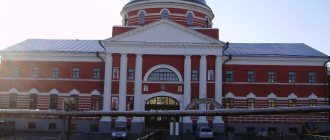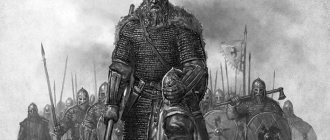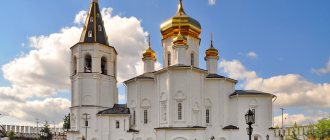Mir
Greece periphery Thessaly Hilandar Monastery (Athos) Map loading in progress...
{"format":"leaflet","minzoom":false,"maxzoom":false,"limit":50,"offset":0,"link":"all","sort":[""], "order":[],"headers":"show","mainlabel":"","intro":"","outro":"","searchlabel":"\u2026 \u0441\u043b\u0435\ u0434\u0443\u044e\u0449\u0438\u0435 \u0440\u0435\u0437\u0443\u043b\u044c\u0442\u0430\u0442\u044b","default":"","import-annotation":false,"width ":"auto","height":"350px","centre":{"text":"","title":"""link":"""lat":40.3400582000000014204488252289593219757080078125,"lon": 24.120711000000000012732925824820995330810546875,"icon":""},"title":"","label":"","icon":"","lines":[],"polygons":[],"circles":[ ],"rectangles":[],"copycoords":false,"static":false,"zoom":8,"defzoom":14,"layers":["OpenStreetMap"],"image layers":[] ,"overlays":[],"resizable":false,"fullscreen":true,"scrollwheelzoom":true,"cluster":false,"clustermaxzoom":9,"clusterzoomonclick":true,"clustermaxradius":80, "clusterspiderfy":true,"geojson":"","clicktarget":"","showtitle":true,"hidenamespace":false,"template":"","userparam":"","activeicon": "","pagelabel":false,"ajaxcoordproperty":"","ajaxquery":"","locations":[{"text":"\u003Cb\u003E\u003Ca href=\"/palomnik/%D0% 9C%D0%BE%D0%BD%D0%B0%D1%81%D1%82%D1%8B%D1%80%D1%8C_%D0%A5%D0%B8%D0%BB%D0%B0% D0%BD%D0%B4%D0%B0%D1%80_(%D0%90%D1%84%D0%BE%D0%BD)\» title=\»\u041c\u043e\u043d\u0430\u0441\ u0442\u044b\u0440\u044c \u0425\u0438\u043b\u0430\u043d\u0434\u0430\u0440 (\u0410\u0444\u043e\u043d)\»\u003E\u041c\u043e\u043d \u0430\u0441\u0442\ u044b\u0440\u044c \u0425\u0438\u043b\u0430\u043d\u0434\u0430\u0440 (\u0410\u0444\u043e\u043d)\u003C/a\u003E\u003C/b\u003E\u00 3Chr /\u003E\u003Ca href=\"/palomnik/%D0%A1%D0%B2%D0%BE%D0%B9%D1%81%D1%82%D0%B2%D0%BE:%D0%90%D0%BD%D0 %BD%D0%BE%D1%82%D0%B0%D1%86%D0%B8%D1%8F\" title=\"\u0421\u0432\u043e\u0439\u0441\u0442\u0432\u043e:\ u0410\u043d\u043d\u043e\u0442\u0430\u0446\u0438\u044f\»\u003E\u0410\u043d\u043d\u043e\u0442\u0430\u0446\u0438\u044f\u003C/a\ u003E:\u0437\u0430 \u043d\u0438\u043c\u0430\u0435\u0442 \u0432 \u0441\u0432\u044f\u0442\u043e\u0433\u043e\u0440\u0441\u043a\u043e\u0439 \u0438 \u0435\u0440\u0430\u0440\u0445 \u0438\u0438 4-\u0435 \u043c\u0435\u0441\u0442\u043e; \u0441\u043e\u0441\u0442\u043e\u0438\u0442 \u0432 \u044e\u0440\u0438\u0441\u0434\u0438\u043a\u0446\u0438\u0438 \u041a\u043e \u043d\u0441\u0442\u0430\u043d \u0442\u0438\u043d\u043e\u043f\u043e\u043b\u044c\u0441\u043a\u043e\u0433\u043e\u043f\u0430\u0442\u0440\u0438\u0430\u0440\u 0445\u0430,\u043d\u043e\ u0434\u0443\u0445\u043e\u0432\u043d\u043e\u043f\u043e\u0434\u0434\u0435\u0440\u0436\u0438\u0432\u0430\u0435\u0442\u0441\u04 4f\u0421\u0435\u0440\u0431\ u0441\u043a\u043e\u0439 \u041f\u0440\u0430\u0432\u043e\u0441\u043b\u0430\u0432\u043d\u043e\u0439 \u0426\u0435\u0440\u043a\u0 43e\u0432\u044c\u044e,\u044f \u0432\u043b\u044f\u044f\u0441\u044c \u043e\u0434\u043d\u043e\u0439 \u0438\u0437 \u0432\u0435\u043b\u0438\u0447\u0430\u0439 \u0448\u0438\u0445 \u0441\u0435 \u0440\u0431\u0441\u043a\u0438\u0445 \u0441\u0432\u044f\u0442\u044b\u043d\u044c","title":"\u041c\u043e\u043d\u0430\u0441\u0442\u 044b\u0440\ u044c \u0425\u0438\u043b\u0430\u043d\u0434\u0430\u0440 (\u0410\u0444\u043e\u043d)","link":"""lat":40.340058200000001420448825228959 3219757080078125,"lon":24.120711000000000012732925824820995330810546875,"icon ":""}],"imageLayers":[]}
40.27819; 24.217071
Greece, periphery of Thessaly, autonomous monastic state of the Holy Mountain
periphery Thessaly
Greece
Telephone:
+30 23770 23797, +30 23770 23760
Hilandar
occupies 4th place in the Svyatogorsk hierarchy; is under the jurisdiction of the Patriarchate of Constantinople, but is spiritually supported by the Serbian Orthodox Church, being one of the greatest Serbian shrines. Located on the northeastern side of the Athos Peninsula.
History[edit]
Hilandar Monastery is dedicated to the Nativity of the Blessed Virgin Mary. Judging by some handwritten sources, a monastery with that name existed already in the 10th century, but over time fell into disrepair. Its name is also connected with this stage in the history of the monastery: initially it was called “the monastery of George Hilandar” - that was the name of the hermit who labored in the monastery at the end of the 10th century. From the first monastery in Hilandar, only the well has survived. In 1198, by decree of the Byzantine Emperor Alexy III Angelos, the monastery was transferred to the Serbian saints Sava and his father Stefan Nemana (monastically Simeon). Through their efforts, the restoration of the monastery began. The care of Hilandar was continued by his second ktitor - the Serbian king Stefan Uros Milutin, and after him - king Stefan Dusan, who was called the autocrat of the Greeks, Serbs and Bulgarians (he, by the way, is also known in Svyatogorsk legends for having climbed to the very top of Mount Athos on horse). Having become the most significant Slavic monastery on the Holy Mountain, Hilandar became a bridge connecting Serbia and Byzantium with ties of friendship, the cradle of Serbian spirituality and the center of the spread of the hesychast tradition in the Slavic world. It is significant that almost all the primates of the Serbian Church were associated with this monastery.
The monastery was patronized by the Byzantine emperors Andronikos II and Michael VII Palaiologos and the Russian tsars. Gradually, Hilandar acquired many lands, so that at the moment his possessions exceed in area even the plots of the Great Lavra.
In the 18th century, the monastery was dominated by monks from Bulgaria. Among them, it is worth highlighting Paisiy Hilandarsky, the author of the first text of the newest period of Bulgarian writing - “History of the Bulgarian People” (1762).
The inhabitants of Hilandar supported the Greeks who rebelled against Ottoman rule, and the monastery was occupied and ravaged by Turkish troops, who caused significant damage to it. Hilandar was also seriously damaged by fires in 1722 and 1891. In 1896, several years after the second disaster, the monastery was restored with donations from the Serbian Tsar Alexander.
The cathedral temple of Hilandar was built at the beginning of the 13th century, on the site and taking into account the architectural features and proportions of the catholicon that existed here in the 10th century, i.e. in the early period of the monastery's life. It is considered one of the most beautiful Athonite cathedrals and a characteristic example of Byzantine temple architecture. The original frescoes dated back to 1320 and belonged to the famous master George Calliergius from the Greek province of Macedonia. Unfortunately, later the temple was painted again (1803–1804), and a significant part of the ancient frescoes was lost. The wooden iconostasis of the catholicon dates back to 1774, and some of the icons in it are from the 16th century. The ancient marble iconostasis has also been preserved behind it. In the western part of the lithium narthex you can see the image of the Serbian king Stefan V Urosh Milutin and his father-in-law, the Byzantine emperor Andronikos Palaiologos. There is also a banner brought to the monastery by Alexander I Obrenovic in 1896.
Around 1200, the “Tower of St. Sava” was built, which was completed several times in subsequent years. On the fourth floor of the pier there is the chapel of John the Baptist, painted at the end of the 17th century. Next to the tower, a paraclis of the Archangels was built in the 14th century. Next to the phial, painted in 1847, there are two cypress trees planted by Saint Sava himself. Several times they became a refuge not only for numerous songbirds, but also for monastery treasures. In moments of danger, the monks hid their most valuable things there. The Hilandar bell tower is located in the eastern building of the monastery. On its last fourth floor is the paraklis of St. John of Rylsky, and to the south of it there is a monastery hospital and the chapel of the Intercession of the Mother of God, built in 1740 at the expense of Archimandrite Gerasim.
On February 19, 2004, a terrible fire occurred in Hilandar. Overnight, more than two-thirds of the buildings burned down; mainly only those that were founded by Saint Sava himself were preserved. The vast archondarik also burned down. Anyone who comes to Hilandar can venerate the “Three-Handed” icon of the Mother of God, and can even have a meal, but you can’t always count on an overnight stay. Work to restore the monastery continues: the Serbian government and many organizations and individuals from Greece, Serbia and other countries provided great assistance to Hilandar.
In 1979, a two-story museum was opened in Hilandar, including exhibits from the monastery sacristy, library and archive. One of the main treasures is the royal gates, contemporary with the founder of the monastery, George Hilandar. The mosaic icon of Hodegetria from the 12th century is widely known; other unique treasures stored in the museum are also of great interest.
Hilandar owns several cells in the area of the Athonite capital of Kareia. Among them, it is worth highlighting the “Typikarnitsa” (it contains the miraculous image of the Mother of God “Mammal”), the “Pateritsa” (the staff of Sava of Serbia is stored) and the cell of the Assumption of the Blessed Virgin Mary, better known as the “Molyvdoklisia” (it was painted by masters of the Cretan school in the 16th century ).
Take a virtual tour of the monastery
Orthodox Christians celebrate the Council of the Reverend Fathers of the Hilendar Monastery on June 13
Orthodox churches, including the Russian Orthodox Church, honor the Council of the Reverend Fathers of the Hilandar Monastery. These are Serbian saints who attended monastic school in Hilandar. Their memory is celebrated on July 13.
Cathedral of Athos Saints. XVIII century. The ranks of the Athonite saints also include the venerable fathers of the Hilandar monastery. Orthodox churches honor their memory on July 13. Photo: drevo-info.ru
The Cathedral includes:
- St. Simeon the Myrrh-Streaming, one of the founders of Hilandar (+ 1200, commemorated February 13, November 3).
- St. Sava I, 1st Archbishop. Serbian (+ 1237, commemorated January 12, May 6).
- St. Arseny I, Archbishop. Serbian (+ 1266, commemorated October 28).
- St. Sava II (Nemanich), Archbishop. Serbian (+ 1271, commemorated February 8).
- St. Ioannikis I, Archbishop. Serbian (+ 1279, commemorated May 28).
- St. Eustathius I, Archbishop. Serbian (c. 1285, commemorated January 4).
- St. Sava III, Archbishop. Serbian (+ 1316, commemorated July 26).
- St. Nicodemus, Archbishop Serbian (+ 1323/25, commemorated May 11).
- St. Daniel II, Archbishop. Serbian (+ 1338, commemorated December 20).
- St. Ephraim, Patr. Serbian (+ 1400, commemorated June 15).
- St. Cyprian, Met. Kyiv (+ 1406, memory of May 27, September 16).
- St. Nektary Bitolsky (+ 1500, memory of December 5, December 15).
- St. Raphael of Banat (+ c. 1590, commemorated August 16).
- St. Vasily Ostrozhsky (+ 1671, commemorated April 29).
- Prmch. Damascene Gabrovsky, abbot (+ 1771, commemorated January 16).
- Prmch. Onuphrius of Chios, schemamonk (+ 1818, commemorated January 4).
By leaving a comment, you accept the user agreement
Shrines[edit]
Miraculous icons:
- Icon of the Mother of God “Three-Handed”
- The “Popskaya” Icon of the Mother of God is located in the monastery cathedral church. Processions of the cross and blessings of water are performed with this icon.
- Icon of the Mother of God “Mammal” (Greek “Γαλακτοτροφούσα”, “Galactotrophus”), the Mother of God depicted nursing the Child Jesus.
- The “Akathist” icon of the Mother of God is located in the iconostasis of the cathedral Church of the Presentation of the Virgin Mary of the Serbian Hilandar Monastery on Mount Athos.
- The icon “She who enlightened the ecclesiarch” (Greek: Παναγία ἡ παιδεύσασα τόν ´Εκκλησιάρχη) is located in the cathedral church of the monastery.
In the cathedral church to the right of the choir there is a silver-plated tomb in which rested the incorruptible and myrrh-streaming body of St. Simeon
- the founder of the monastery, transferred by his great son to Serbia to pacify the unrest that arose there.
a vine
grew on the outside of the temple , the fruits of which have wonderful healing powers, especially for barren spouses. The monastery houses many books with photographs of newborn children and letters from their grateful parents.
The miraculous icon of the Mother of God “Three Hands” resides in Hilandar
.
The history of this image is connected with the life of St.
John of Damascus - a theologian, a zealous fighter against the iconoclastic heresy, which was propagated in the 8th century by the Byzantine king Leo the Isaurian. The heretic emperor slandered the Saint, who served at the court of the Damascus emir. The emperor forged a letter in which the Christian John allegedly offered the emperor a way to attack his Muslim ruler. The emir ordered the Saint's right hand to be cut off. At night, John put the severed hand to his hand and, standing in front of the icon of the Mother of God, asked Her for healing. A miracle happened: the brush grew in! In gratitude for the healing, John ordered a silver brush and applied it to the icon. (His example is followed to this day by pious Greeks who received healings through the prayers of the Mother of God or Saints: on many miraculous icons you can see hanging silver handles, legs, coins, watches, orders, etc.) After this, John took monastic vows and retired with this image to the Lavra St. Savva the Sanctified. The “Three-Handed” remained there for five hundred years, until the Lavra was visited by the future great Serbian saint Sava, to whom it was handed over. First St. Savva took the icon to Serbia, but when trouble arose there, the icon was placed on a donkey and allowed to wander according to the will of the Queen of Heaven. And the donkey came to Svyatogorsk Hilandar.
At first, the “Three-Handed One” was in the altar of the cathedral. But after some time, disorder arose in the monastery related to the choice of a new abbot: the monastery fathers could not come to a common decision. And then one day the brethren saw that the image of the “Three-Handed Lady” had been transferred from the altar and was standing in the abbot’s place. The icon was moved back, and the cathedral was carefully closed. However, despite this, the next day “Three-Handed” again found herself in the place of the abbot. When this was repeated for the third time, the brethren realized that the Most Holy Virgin herself wanted to be the abbess in their monastery. Since then, in Hilandar they do not elect an abbot, and before any important matter, the monks take a blessing from their Abbess - the “Three-Handed One”. It is interesting that this icon is double-sided: on one side the Mother of God is depicted, on the other St. Nicholas the Wonderworker.
The monastery houses the greatest shrine - the petrified Blood of the Savior. Also here are parts of the Life-giving Cross of the Lord, His crown of thorns, reeds and shrouds; some myrrh from the gifts of the Magi. The monastery also houses the venerable head of the prophet Isaiah and the relics of the Great Martyr. Panteleimon and Theodore Stratilates, martyr. Eustratia and Marina, St. Gregory the Theologian, Eutychius and Nicephorus, Patriarchs of Constantinople, St. Simeon the Stylite, martyr. Artemy and other saints.
The monastery has one of the largest libraries of Slavic and Greek manuscripts. The library stores about 700 Slavic manuscripts, of which 25 are written on parchment, and more than 6,600 volumes of books.
Shrines of the monastery
The cathedral church of Hilandar surprises with its collection of miraculous icons of the Mother of God. The most famous is the “Three-Handed Lady,” standing on the abbot’s place in the monastery and demonstrating the authority of the Mother of God over the monastery.
The monastery also preserves an ancient vine that rose from the ground where Simeon the Myrrh-Streaming was buried. Now the appearance of the vine leaves much to be desired, nevertheless it blooms and bears fruit, its fruits act as a cure for diseases and infertility. The grapes collected from it are dried and given to pilgrims who come to pray for the continuation of offspring.
Speaking about the shrines of the monastery, we must not forget about the fragments of the gifts of the Magi to the Infant Christ, which also include the instruments of the Lord’s passion, particles of the True Cross of the Lord, and a number of relics. The altar of the cathedral became the repository of the Gospel; white leather was used to create its sheets, all inscriptions were made in gold letters.
© Maxim Ershov
Patronal holidays[edit]
- Presentation of the Blessed Virgin Mary into the Temple
- December 4 - Icon of the Most Holy Theotokos “Three-Handed”
- July 25, July 11 - Sava I of Serbia, saint
- January 25 - Simeon the Myrrh-Streaming (in the world Stefan Nemanja), Hilendar (Athos), reverend
- February 26 - Procession of the Cross with the Icon of the Mother of God of the Trinity
- Tuesday of Holy Week
A little history
The monastery was founded in 1198 by the Serbian ruler Stefan Nemanja and his son Rastko, who took monastic vows under the names of Simeon and Sava and subsequently became one of the most revered Serbian saints. Initially, Hilandar was subordinate to the Vatopedi monastery, but later gained independence and, in turn, accepted seven other monasteries. Solid financial support from the Serbian princes ensured a comfortable existence for the monastery even during the difficult years of the Turkish occupation. Alas, the fires did not spare the monastery: it burned twice, as a result of which the influx of monks significantly decreased. However, today it is one of the most well-kept, lively and hospitable monasteries of Athos with a brethren of about 70 monks.
In Hilandar there is kept a tree of the vine of St. Sava, the fruits of which were used to heal female infertility.
Pilgrim[edit]
Telephone:
+30 23770 23797, +30 23770 23760
Directions:
Hilandar Monastery is located on the northeastern side of the Athos Peninsula. Pilgrims can get to Hilandar a) by ferry from the village of Ierissos or from the Esphigmen monastery, b) by ferry from Ouranoupolis or from Daphne to the pier of the Hilandar monastery, and then the monastery car takes everyone to the Hilandar monastery for free, c) on foot from the Esphigmen monastery (40 min walk); from the Zograf Monastery (2h 30m walk); or from the Vatopedi monastery (4 hours walk).
From Hilandar the path goes to the Bulgarian Zograf, which is ten kilometers away. This monastery can also be reached from its pier on the western side, four kilometers away from the monastery (as a rule, pilgrims arriving by ship are transported to the monastery by a small bus).
Used materials
- Website page of the Greek Orthodox pilgrimage service Mount Athos Orthodoxy
: - “Khilandar”, official website of the Kherson diocese Orthodox Kherson region
, July 4, 2015: - “Orthodox shrines of the world. Hilandar Monastery on Holy Mount Athos", official website of the Trinity-Sergius Lavra based on materials from the book by Begiyan S.R., comp., Orthodox shrines of the world
, Minsk: Harvest LLC, 2008, p. 117-121:
[1] Or Hilendarsky
.
[2] χελανδάρης - crew member of the chelandion, one of the main types of Byzantine naval ships of the 9th-11th centuries.
Pilgrimage to Hilandar
To make a pilgrimage to this and other monasteries of Athos, you will need:
- International passport;
- Visa to Greece (Schengen);
- Diamonitirion - a special permit to enter the territory of Athos (you can order in advance at the monastery or the pilgrimage office of Athos in Thessaloniki, receive it in Ouranoupolis on the day of arrival).
The opportunity to visit the Holy Mountain is given only to men (boys). During the fire of 2004, more than 2/3 of the monastery’s buildings were damaged, including cells and archondarik, so Hilandar cannot always provide hospitality to pilgrims. At the same time, despite the ongoing restoration work on the territory, the shrines of the monastery are available for worship.
If you want to visit the monastery, you can apply for a “geniko” diamonitirion (giving the right to spend the night in any monastery of the Holy Mountain if it can accommodate you), and stay in nearby monasteries (Zograph, Vatopedi), or in a hospice house.
In order not to burden yourself with worldly vanity and organizational issues during your pilgrimage, use the services of the Tobias pilgrimage service. The pilgrimage routes we have developed allow you to fully experience the grace of the holy places of Athos, accompanied by an Orthodox guide.
To main
